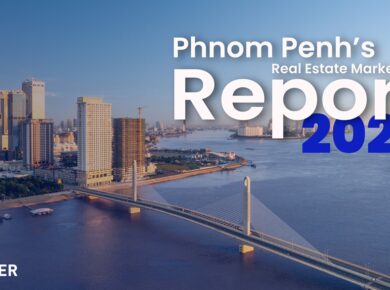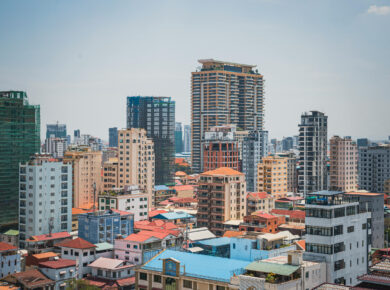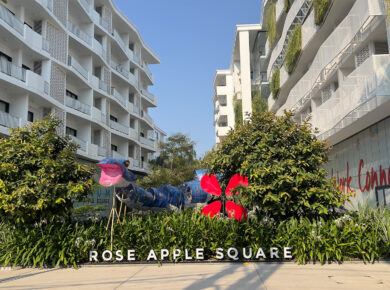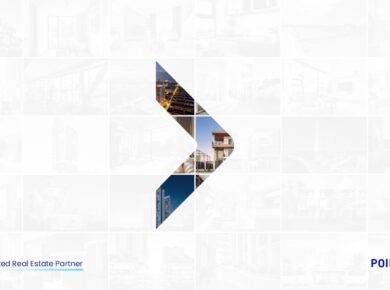Renowned as one of the world’s premier travel hubs, Siem Reap draws millions of visitors annually. As Cambodia’s unofficial tourism capital, it offers a rich blend of natural and cultural attractions, from the world-famous Angkor temples and charming colonial-era buildings to unique museums, cultural theme parks, and Southeast Asia’s largest freshwater lake—the Tonle Sap. Beyond its global recognition for heritage and tourism, Siem Reap is evolving into a lucrative destination for investors. Although much of its potential remains untapped—particularly in terms of infrastructure—investors are increasingly asking: Is Siem Reap the next best investment destination after Phnom Penh? The answer is a resounding “yes.”
1. Siem Reap’s New International Airport: A Catalyst for Growth
Siem Reap–Angkor International Airport, currently the city’s sole aviation hub, is Cambodia’s second-busiest after Phnom Penh’s. Even amid the global pandemic, the airport recorded substantial international arrivals, hinting at a strong rebound as travel normalizes post-COVID-19. Historically, Siem Reap welcomed over three million domestic and international visitors in the first nine months of 2019 alone.
With widespread vaccination efforts boosting international travel, Siem Reap’s visitor numbers are poised to rise once more. To accommodate this growth, the Cambodian government is investing in a new Siem Reap International Airport, set to become the largest in the country—three times the current size, spanning roughly 700 hectares. Scheduled for completion in March 2023, the $900-million project will proceed in three phases. Once fully operational, the airport will handle up to 10 million passengers annually, substantially boosting the region’s connectivity and appeal for both tourism and commercial ventures.
2. Emerging Tourism Hotspots Set to Transform Siem Reap
Cambodia-China Cultural and Creative Park
As part of China’s Belt and Road Initiative, a large-scale Cambodia-China Cultural and Creative Park is under development near the Sokha Siem Reap Hotel. With a $70-million budget, this 3.3-hectare complex will feature a 1,500-seat “Smile of Angkor” theatre, the Chenla Cultural Corridor, Daguan Museum, a Cambodia-China Cultural Exchange Center, a Culinary Cultural Center, and more. Upon completion, it will enhance Siem Reap’s appeal, attracting both domestic and international tourists.
Angkor Wildlife and Aquarium Project
Angkor Wildlife and Aquarium, supported by Japanese and U.S. investors, is set to create a world-class aquarium and wildlife park covering 100 hectares. With a $70-million investment, it aims to rival the iconic Angkor Wat as a must-see attraction. Beyond entertainment, this project will educate visitors on environmental conservation, adding value to Siem Reap’s growing eco-tourism sector.
Song Saa Reserve
Building on the success of the renowned Song Saa Private Island, the Song Saa Reserve is set to establish a new standard for sustainable, luxury tourism. Located just 5 minutes from the Banteay Srei Temple and 20 minutes from Angkor Wat, this mixed-use resort will emphasize responsible development. With a central 35-hectare lake, it will include hotels, villas, educational centers, a solar farm, and restored rainforest areas. Offering a unique opportunity for investors, over 120 hectares will be available for hospitality-based projects.
Angkor Lake of Wonder by NagaCorp
NagaCorp, a leading casino operator, plans to build a world-class, non-gambling integrated resort near the Angkor Archaeological Park. Twice the size of California’s Disneyland, the $350-million Angkor Lake of Wonder will feature a theme park, water park, cultural gardens, meeting facilities, and luxury hotels. Slated for completion by 2025, the resort is designed by renowned American architecture firms Steelman Partners and Gensler. Its arrival will significantly boost Siem Reap’s tourism economy.
3. Comprehensive Tourism Development and Land Use Master Plans for 2035
The Cambodian government is advancing an ambitious Tourism Development Master Plan for Siem Reap through 2035. Key focus areas include:
- Developing new tourism hubs and corridors
- Enhancing Siem Reap’s global identity and brand
- Introducing targeted tourism marketing strategies
- Improving transportation infrastructure (road, water, rail, and air)
- Establishing better governance and private-public investment mechanisms
Simultaneously, a new Land Use Master Plan for 2035 will guide sustainable urban planning, ensuring balanced growth and preserving cultural and natural heritage. With these frameworks, Siem Reap aims to offer a compelling, well-regulated environment for investors and developers.
4. The Rise of “Grand Siem Reap”—A New Smart City to the East
To meet rising demand for modern housing, commercial spaces, and sustainable infrastructure, a new “Grand Siem Reap” city is on the horizon, located about 60 kilometers east of the current city center. Inspired by Khmer architecture and designed as a “Smart City,” Grand Siem Reap will be free from the construction height restrictions near the heritage sites. Although still in the planning phase, this development holds enormous potential for real estate investors seeking early-entry opportunities in a high-growth market.
5. Infrastructure Overhauls: Modernizing Siem Reap’s Urban Landscape
In late 2020, Cambodian Prime Minister Hun Sen launched a $150-million, 38-road renovation project to modernize Siem Reap’s infrastructure. This comprehensive network will link urban areas to suburban regions and major tourist attractions, reducing traffic congestion and improving overall quality of life. Additional funds—about $5 million—will revamp 9 km of sidewalks along the Siem Reap River, enhancing the city’s appeal for both residents and visitors.
6. Rosewood Hotels & Resorts: A Luxury Brand’s Entry Into Siem Reap
Global luxury hospitality brand Rosewood Hotel Group is expanding its footprint in Southeast Asia, with plans to open Rosewood Siem Reap in 2022. Already operating the acclaimed Rosewood Phnom Penh, the company recognizes Cambodia’s strong tourism potential. The arrival of Rosewood in Siem Reap will elevate the city’s hotel sector, increasing its international visibility and attracting even more affluent travelers.
Why Invest in Siem Reap Now?
- Surging Tourism Demand: Post-pandemic travel resurgence will restore Siem Reap to top-tier global tourist status.
- Infrastructure Boom: New airports, roads, and public utilities promise improved connectivity and enhanced quality of life.
- Cultural & Creative Hotspots: Upcoming large-scale attractions and resorts enrich the visitor experience, broadening year-round tourism appeal.
- Sustainable Development Plans: Official master plans ensure responsible growth, balancing conservation with modernity.
- Premium Hospitality Brands: The entry of high-end hotel chains signals investor confidence and sets a benchmark for luxury experiences.
As Siem Reap transitions from a pure tourism hub into a dynamic, multifaceted investment destination, early investors stand to benefit from the city’s evolving infrastructure, expanding hospitality sector, and strong government backing. For those looking beyond Phnom Penh, Siem Reap offers a rare blend of cultural authenticity, growing real estate opportunities, and a robust framework designed for long-term, sustainable growth.








